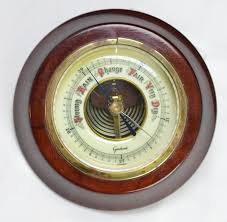APRIL 22, 2020 – Besides my daily excursion to the “mountains” of “Little Switzerland” (a local golf course), I take daily walks in the opposite direction. The route leads down our quiet block and the next, past a small park and to the edge of what I call the Ruhr Valley—in reality a busy route named “Snelling Avenue.” This normally crowded byway is traveled by commercial vehicles and container trucks running between a large rail yard two miles south and sprawling warehouse/distribution centers five miles north. In short, Snelling Avenue is an industrial bloodline, hence my label, the “Ruhr,” a heavy industrial zone in North Rhine-Westphalia, Germany.
My walks to the Ruhr are for more than exercise. They also provide a glimpse into “what’s happening” as our societal response to Corvid-19—and the economic consequences.
First, traffic is much lighter than “normal.” Frequently, intervals occur between waves of traffic that would allow you to stroll across Snelling without risk of becoming a vehicular “accident” statistic.
Second, the entire +300-truck fleet stay parked on the other side of the Ruhr. Huh?! For just over 11-1/2 months of the year (the remainder being the 10-days in late August, early September, when the Minnesota State Fair is in full swing) a large construction engineering firm leases the vast state fair parking area for parking of its fleet of white pickups on weekends. Now all the trucks are parked there all the time.
Third, the A Line—high speed, clockwork, highly patronized mass transit buses that race up and down Snelling at 20-minute intervals—is now the “ghost line.” About half the buses run with no riders. Nearly all the rest have but a single passenger. The other day, I saw an A Line fly by with two customers—spaced several rows apart.
Of the people who are on the go, who are they and where are they going. Are they “essential” employees of essential industries? Are they out buying “essentials”—groceries and prescription drugs, and now, I guess, lawn and garden supplies? Are they en route to regional parks for a breath of fresh air? With local gas prices falling below $1.50/gal., how many people are simply out for a joy ride*? To one extent or another, each vehicle involves economic activity—pure consumption (food/drugs to be purchased; gas, oil, tires, lubricant, fluids; wear and tear on the car, eventually to be serviced) or consumption plus productivity (working somewhere).
Moreover, during the heart of the day, I still see a number of trucks hauling building supplies, appliances, food and beverages, and, of course, those container trucks, and FedEx/UPS trucks—a telling sign that a sizable portion of the economy is still, well, rolling. But again, volumes are down. What will the truck count be in another week or two; a month, six or 12?
In any event, there appears to be wide compliance with Governor Walz’s “stay in place” order.
I’ll keep tabs on the economy and social distancing by checking daily . . . the Ruhr.
*One Saturday night two weeks ago, youths from the local Hmong community turned Snelling Avenue into a veritable dragstrip for their souped-up, low-riding Hondas and Toyotas. At first I was incensed, having desired to see Venus in her quiet beauty slip toward the horizon across the Ruhr. How dare the dragsters disturb me by their racket? But my righteous indignation soon turned to amusement. With cheap gas, no other traffic, and as far as I could tell, one driver per car, the Saturday night ruckus was a perfectly harmless and innovative way for a bunch of gear-head kids to blow off steam during this time of social distancing and uncertainty. I laughed out loud—knowing full well that Venus will outlast us all.
(Remember to subscribe to this blog and receive notifications of new posts by email.)
© 2020 by Eric Nilsson
